Kobane Diary: 4 Days Inside the City Fighting an Unprecedented Resistance Against ISIS
I chose to stay to report about the reality on the ground and tell millions of Kurds what is really happening in Kobane, as opposed to the propaganda and lies spread by Islamic State media and several other media outlets.
My reporting is for Kurdish people to know that Kobane is alive and well because the reality is that this city is keeping up an incredible and an unprecedented resistance against continued ISIS offensives that uses every means of terror in order to carry out a genocide against the people of Kobane.
In addition to ISIS, some international media organisations have reported that Kobane has almost completely fallen into the hands of ISIS gunmen, but this is a pure lie to break the Kobane resistance. If it were true then I would not be reporting from here.
Newsweek Magazine is Back In Print
I have stayed in my city in order to counter such propaganda news spread by some outlets. Also, I want to die here with my people in my own city because abandoning Kobane is no solution. Kurds are killed everywhere, whether it is here, elsewhere in Syria or in Turkey. So, I would rather stay and I am happy to do whatever it takes to contribute to my city’s resistance through my journalism.
A remarkable resistance against ISIS terror is led here by a besieged people short of food, fuel, weaponry and without adequate international support. The ISIS gunmen defeated five Iraqi army divisions in Mosul and elsewhere in Iraq in one day back in June, but Kobane has been resisting alone for almost a month now, despite it being besieged for nearly a year and cut-off from all the other Kurdish cities and towns in Syria. Kobane has already made history with this resistance and I want to be part of telling its tragic but nevertheless heroic story.
Sleeping on the Wing
Thursday October 9th. Turkey faces renewed pressure to intervene militarily in Kobane rather than watching from across the border. But the government says it is unwilling to take part unless the coalition targets Syrian President Assad’s regime and sets up a no-fly zone.
Today marked the 25th day of Kobane’s resistance against ongoing onslaughts by ISIS. What is happening here is extraordinary in whatever way you want look at it. Everybody is playing a role in this historic resistance against ISIS and in defence of their city, although intense fighting rages in the outskirts and within the city’s inner districts, too.
Life under siege has brought people together. Everybody is a volunteer in Kobane, in order to keep up the resistance against ISIS. Doctors and nurses work for free at the makeshift hospitals; shopkeepers have emptied their shops of food, drinks and other accessories in order to distribute them for free to the fighters and civilians.
Courageous mothers whose sons and daughters are fighting on the frontline gather and cook food on a daily basis for whoever is hungry and needs food. Money is no longer worth anything because everybody wants to share their resources as well as their willpower to help one another through these hard times and continue with the resistance to save the city. It seems as if everybody belongs to one big family.
This is the solidarity on the ground that is fueling the spirit of the Kobane resistance. The young and old who are able to fight have all resorted to arms and they vow to defend the city until the end. Today, I saw Democratic Union Party (PYD) female co-leader Asiya Abdullah and Kobane canton government minister Enwer Muslim holding Kalashnikov rifles and they left in the direction of the eastern districts, where the fighting with ISIS gunmen has intensified on an unprecedented scale.
The clashes have turned into a full-scale urban guerrilla warfare in the eastern districts, where ISIS gunmen have recently infiltrated several key buildings. The street-to-street fighting has been raging non-stop in the eastern districts, especially in the industrial estate of Sina’a. Intense fighting also continues in the outskirts near the craggy hills of Mushta Nur as well as in the neighbourhood of Misher.
Ferocious street-to-street battles are taking place across the Taxa Araban district, where one foreign airstrike hit ISIS fighters today and exploded a building. In the western outskirts, the fighting continues but ISIS gunmen are not able to make any advances. An airstrike hit an ISIS position in the village of Gulmit, west of Kobane where YPG (People’s Protection Units – an armed wing of the Democratic Union Party) and their female counterparts YPJ (Women’s Protection Units) have managed to halt ISIS advances for several days now.
Indiscriminate shelling and bombardments of the city by ISIS gunmen have not stopped either. A bomb or a mortar round falls on Kobane’s inner districts every ten minutes. The dark and white plume of the explosions coming out of the destroyed buildings entirely covers the sky.
This is not a normal war because ISIS gunmen are aiming to annihilate every living being inside Kobane. You might wonder how we sleep. Well, nothing is in its normal state any longer, even sleeping patterns. People could sleep anywhere and at anytime but it is impossible to get an hour of proper sleep. The sound of gunfire, mortar rounds and explosions combined with the scenes of the destruction this war has brought to every corner of our city is just nerve-wracking. People are all outside their homes armed and all on alert to fight back against ISIS. Guard shifts no longer exist even for the armed forces because everybody walks, eats and sleeps with their rifle, grenades and pistol with them at all times.
If you want to sleep you can sleep anywhere because you know that everybody else is on alert around you. But most of the time we just pretend to sleep when we rest for a while. When I want to go inside a house to sleep, the thought suddenly enters my head of people in Kobane getting exterminated in a genocide or that a mortar or a bomb could land on my head at any moment. This prevents me from sleeping properly and I think this is the same for almost all of the people living here now.
There is no proper electricity, water, medicines – and even adequate weapons for that matter. We are short of almost everything, therefore we ration everything. One YPG fighter who came back from the eastern frontline today told me that ISIS gunmen have unlimited ammunitions therefore they sometimes fire just for fun, but YPG and YPJ fighters have to aim properly so as not to waste a single bullet.
In other words, the Kurdish fighters have to ration even their bullets and ammunitions. People have dug wells to get drinking water because ISIS long ago exploded all the pipelines that supplied the city with clean water. Generators provide us with limited electricity and people go to where the generators are situated and then queue to charge their phones. We also ration food, tea and coffee.
Some of the weapons people are using are woefully inadequate. I saw two old men today: one had a shotgun and the other had a hunting rifle. It is normal to spot tape around the Kalashnikov butts that fighters are carrying.
Kobane is short of medicines. All the drugs that arrive here are smuggled in by Kurds from Suruc in northern Kurdistan (Turkey). These Kurds carry medicines in backpacks and smuggle them through the border to help the resistance. Sometimes food and fuel are also smuggled in from Suruc. I was at the People’s Assembly building today and met five Kurdish backpackers who had just managed to smuggle medicines safely into Kobane. They said that the Turkish border guards had opened fire on them and that they barely managed to escape alive to bring the medicines here.
Many people who bring medicines and other supplies from Turkish Kurdistan are risking their lives because the Turkish government closed the border crossings and the Turkish border guards do not hesitate to shoot Kurdish civilians. Turkish border guards also arrested 158 Kurdish civilians of Kobane today after they tried to cross the border into northern Kurdistan (Turkey). They are now held as prisoners in the border village of Ali Kur. I talked to one girl among those arrested because she still secretly has her phone and she said that the Turkish soldiers have threatened to deport them back to ISIS-controlled areas of Kobane. The soldiers have told them that they should have evacuated Kobane long ago and that they are now considered illegal smugglers because the Turkish government no longer accepts refugees from Kobane. So this was my besieged city today. It is alive still, pretty defiant in the face of all these sorts of pressures, embargoes and terror attacks coming from all sides. We’ll see what tomorrow brings.
Street Battles Intensify
Friday 10th October. As US-led airstrikes continue, a Kurdish official claims that ISIS has been pushed back towards the edge of the city. In a statement, the US military confirms that the Kurds are “holding out against ISIS” .
The fierce street-to-street battles as well as the ongoing bombardments have intensified across the inner districts of Kobane today. Explosions are seen and can be heard everywhere as ISIS targets residential areas. It is escalating its attack on an unprecedented scale. The ISIS bombs and mortar rounds indiscriminately fall one after the other on the buildings of central Kobane. Today’s intense bombardments signal that ISIS will soon expand more ground offensives within the city. Judging by today’s heavy bombardments it seems as if the ISIS gunmen have been resupplied with many more artillery and heavy weapons to further their onslaughts.
It is also likely that more reinforcements have arrived from the nearby ISIS stronghold towns of Jarablus and Tall-Abyad to further their attacks on Kobane. Heavy fighting has been taking place near the public garden west of the city.
Foreign airstrikes have hit ISIS positions in Mubtal and near the Mushta Nur hills. However, the most intense street-to-street battles are happening in the southern and eastern districts of the city. Today I went to the Botan district, south of Kobane and I have never witnessed such terrifying street-to-street combat in all the years of this Syrian civil war. The clashes were altogether disturbing and very messy. It was total chaos. Heavy fighting took place all over the district while bombs consecutively landed on almost every building in the area. The YPG fighters told me to leave and return back to central Kobane because it was getting very dangerous. It was indescribably dusty in this district. Also, debris from the buildings that ISIS tanks had destroyed covered the whole area as well as the uniforms and faces of most of the Kurdish fighters.
I counted the bodies of nine dead ISIS gunmen on the ground, and one YPG fighter told me that they had killed them in an ambush earlier in the morning when the gunmen had advanced, unaware that the YPG fighters were stationed inside the demolished buildings.
I also saw two dead YPG fighters in as well as five who were badly injured. An old ambulance with shattered windows and several bullet holes on its doors came to take the injured YPG fighters away.
A Kurdish woman in civilian clothes drove the ambulance and, together with a female nurse, they moved the injured fighters to the makeshift hospitals. The district was so covered in dust and debris that I was wondering how these heroic Kurdish fighters are able to keep going amid this chaotic atmosphere.
I can’t believe what my eyes are witnessing. The fighting is non-stop and the bombardments keep intensifying. I left to return to the central bazaar but then I was stuck for a while because of the street-to-street fighting around the Mustashfa Watani hospital.
The fighting was worse in this area. It was unlike anything I have seen in my life. I stood around 200m away from the hospital and mortar rounds were raining down as if they were falling from the sky. Thank God, this hospital is empty, otherwise, the mortar rounds could have resulted in mass murder of civilians. In the southern and eastern districts inside Kobane, it is not a matter of hearing crossfire or a bombardment every 5 to 10 minutes, it is ceaseless and never-ending.
The ISIS gunmen have all sorts of heavy weapons, which is why they bring so much destruction. But the Kurdish resistance militia fight back with old Kalashnikovs, homemade explosives and RPGs. This is an uneven war and the whole world knows it. Nonetheless, the morale of the Kobane resistance fighters and the people they are defending is incredible. The YPG and YPJ know why they are fighting – and who they are fighting against.
I believe that these Kurdish men and women are now fighting and sacrificing themselves for the entire world because this is a resistance to defend human values and human dignity that ISIS wants to banish from the face of the earth.
I saw a Kurdish female fighter whose right leg was patched because of her injury but she limped into the corner of the building near the Mustashfa Watani hospital to shoot at the opposing side, where ISIS gunmen were positioned. Words don’t do justice to the heroic resistance and bravery put up by these women fighters.
Then I saw a couple of YPG fighters who had their shoulders patched up because of earlier injuries but they were still fighting determinedly. Fighters shout slogans to each other to boost morale on the frontline. For example, “Land or Death,” is one of those slogans that I kept hearing amid the chaos in the Botan district today. The Kurdish word, “Heval” (Comrade), is what you always hear from the fighters when they direct and warn each other amid the chaotic clashes.
I managed to safely return to central Kobane but was shocked by what I had just witnessed. Then, I walked around and came across 21-year-old Dilovan Salih, a Kurdish fighter who previously worked in the local Asayish security forces.
Sali was sitting outside the Democratic Union Party (PYD) headquarters holding his gun in one hand and smoking a cigarette in the other. He appeared very sad and I had never seen him so down. He told me that he has been informed that gunmen had beheaded his 74-year-old grandfather who was a farmer and had refused to leave his home in the village of Pinar, in the outskirts of Kobane. He said his cousins and uncles are now in Turkey and they rang him to confirm the tragedy because ISIS published photos of his beheaded grandfather on the internet.
I hugged him, but then I wished I had never asked him the question in the first place because talking about it made him even sadder than he was before. But when you hear about such atrocities committed in the villages outside Kobane you realise it could happen anytime to the thousands of civilians who’ve remained inside the city. It’s terrifying, especially when the attacks are intensifying and the bombardments are gradually closing in from all sides.
Kurdish officials and commanders have been urging all the civilians to leave Kobane for northern Kurdistan, southeastern Turkey. Around 400 civilians left today, but many others have chosen to stay, saying they would rather die here than go elsewhere as a refugee. An elderly man told me he would rather die inside his home than get arrested or killed by Turkish soldiers on the border, or live on the streets of Turkey as an abandoned refugee. There is now a risk of mass slaughter as the attacks get closer – but the resistance continues.
Dust Storm
Saturday 11th October. At least 553 people are reported to have died in a month of fighting in Kobane, according to the Syrian Observatory for Human Rights. The Kurds repulse a pre-dawn attack and are still in control of the town’s border crossing into Turkey.
Today Kobane once again woke to the sounds of bombardments and gun fire. However, the fighting and bombardments have eased a little in the central district compared to yesterday. Warfare is mostly heard in the eastern and northeastern districts. The fighting has eased in the sense that it halts every now and then before recurring again. Perhaps this is because ISIS has suffered heavy blows and it is maybe also because there is a dust storm. This morning the buildings look like dark shadows because of the storm. I think there is not enough visibility for fighting and this has prevented further ISIS advancements.
The gunmen seem to have retreated from several positions that they held yesterday in the eastern districts; so the heavy bombardment mainly focuses on this part of the city. I saw one YPJ truck full of female fighters going to the eastern districts this morning. I asked to go with them, but a captain refused saying the fighting in the eastern districts is intense and I should stay away. I mostly remain in a house situated in central Kobane next to a makeshift hospital. We no longer have breakfast; we just have one meal a day, either late afternoon or in the evening. However, we do have coffee or tea in the mornings in a house opposite us.
I went there this morning. Some of the women and men who’ve stayed make the coffee and tea for everybody. You just go in and get a hot drink. Around eight people are always present there and you see different people everyday, including fighters, doctors and nurses. Civilians spend the day talking about their families who’ve left as refugees, the fate of the town and what could happen as the Isis offensive continues. There is a radio and everybody gathers around it when the news hour of the regional Arabic and international radios report on Kobane. Some people shout “Oh you liars” when the news says Kobane has completely fallen into ISIS hands because this is clearly not true. When the news is about advancements of Kobane resistance then some people shout, “Long live our determined boys and girls.” Others shout, “Toward Victory; Kobane is Stalingrad and we will turn this city into a graveyard for ISIS rats.”
The people joke about what will happen when the fighting eases – when the women will ask the men to wash the pots. “Common, get up, guys, you are no longer entitled to your old ways of life when our women lead the fight in defence of our city.”
The house where we get our tea and coffee was home to a family of six but only the father has stayed behind and he is a fighter now. This house even turns into a makeshift hospital at times because when people race to bring an injured fighter they forget that the hospital is located opposite, so they just rush and bring the injured person here. Someone usually runs to bring a nurse from the real makeshift hospital.
When I went there this morning, I saw Abu Nasih. An elderly man, he was a farmer and now he has a gun in his hands but he does not go to the frontline. He spends his days between this house and the makeshift hospital opposite, helping out with whatever is needed.
Abu Nasih is known for his jokes but today, when I said good morning to everybody they replied unenthusiastically except that Abu Nasih did not make any jokes or call me names, as he usually does. I knew something was wrong but I did not immediately ask questions.
I got my coffee and Abu Nasih rolled me a cigarette. I quietly asked what was wrong and Abu Nasih told me that ISIS gunmen have beheaded a 55-year-old Kurdish farmer called Ammar Ghirar in front of his wife and children in the village of Tall Khazal, around 16km south of Kobane. A local Arab man secretly rang to confirm the sad news.
Abu Nasih said nobody knows the fate of the man’s wife because she was taken prisoner. He also saluted the courage and bravery of this farmer who has chosen to stay in his village but then said he should have evacuated it with everybody else.
We see dead and wounded people on a daily basis here in Kobane, but when a civilian is killed in such an inhuman way it makes us very sad. In the past two years the people of Kobane have opened their doors to all Syrian refugees, including Sunnis, Christians and Alewites. Kurds have helped tens of thousands of non-Kurdish refugees. Now, a massacre is looming against us but nobody seems to care. We feel lonely in this fight.
The fighting in the eastern districts was heavy this morning. I eventually managed to get there around midday because a YPG logistics car came here and the driver agreed to take me.
When we arrived there was crossfire and sniper fire-fighting but YPG and YPJ fighters seemed ecstatically happy because they had blown up a tank that came close to their positions.
The field captain told me that they had killed around 30 ISIS gunmen in an ambush earlier in the day when the gunmen had tried to come further into the heart of this area and the Kurdish fighters had waited until they regrouped in the main street. They suddenly opened fire from all sides and killed all the ISIS gunmen. I counted 19 of them.
Taqa Tenel is where Kobane high street was located. It used to be a busy area. The shops mostly sold women’s clothes and this market boomed in the late afternoons. Newlyweds, the engaged, mothers and daughters all filled the streets and shops. Now the buildings are destroyed and women’s clothes, lipsticks and stuff lie abandoned amid rubble.
Suddenly a sniper shot, followed by a spray of machine gun, interrupted my thoughts. I retreated. Then a YPG captain told the logistics driver to take me back to the central district as soon a possible. Luckily, the driver said he had to first drop off food and ammunition to the Kurdish fighters nearby the Haji Rashid mosque – and so I tagged along and went to that front too.
When we got to near the mosque, we entered a half-destroyed building where 17 YPG and YPJ fighters were staying. Others were positioned in the surrounding buildings. The fighting had died out just a little and it was now a sniper firefight. Half of the Kurdish fighters were entirely covered in dust. They said the fighting had been intense this morning and some of them had gone into enemy lines and blown up two pickup trucks. Three YPG fighters were martyred in this operation behind IS lines. The logistics driver gave these fighters canned food, water, three boxes of Kalashnikov bullets, two boxes of sniper bullets and one box of grenades.
Then, we left to return to the central district. When I arrived in central Kobane around 40 fighters were getting ready to go to the northern border crossing. The crossing is situated on the edge of the northeastern district and if it is captured then all the people and fighters will be encircled inside Kobane. However, the good news is that YPG and YPJ fighters stationed near the border crossing have managed to push back consecutive ISIS offensives. ISIS gunmen then sent three suicide bombers who drove vehicles crammed with bombs to detonate themselves when reaching the Kurdish fighters. However, all three vehicles were hit from far away and destroyed completely before they reached the fighters. This broke the morale of ISIS and they retreated from the crossing. The border was saved today and so were the people inside Kobane.
One YPG fighter had a Saz instrument with him. He sang a song while the other fighters held hands to dance along. They had very high morale. Just before they left, the YPG fighter hugged me and told to remember him with this song if he does not return from the northern checkpoint.
I met with Abu Nasih again. We had a cigarette together. He seemed happy hearing the news that ISIS gunmen have not been able to move forward today but he still did not make any jokes as he usually does.
So many children
Sunday 12th October, 2014. US defence officials announced that Turkey has agreed to let American and coalition forces use its bases for operations against ISIS. Meanwhile, Kobane’s deputy foreign minister said he was confident that western governments would take last-minute action to save the town.
Central Kobane is almost calm today. This morning we heard firefights, sniper shootings and occasional explosions, but they are not as constant as before. The fighting has turned into a sniper battlefield, although explosions still take place around us. In the eastern and western districts, marksmen on both sides target each other from building to building.
In central Kobane, hundreds of civilians have started to come out of their homes and bomb shelters as the afternoon approaches and bombings are occasionally heard from far off. I never imagined that so many civilians have stayed inside central Kobane. A man told me that his relatives north of the city have refused to cross the border to Turkey and that he knows hundreds of families who are still hiding inside their homes and bomb shelters. This confirms that thousands of civilians are still trapped in the city. It is hard to know exactly who is here. These civilians could be slaughtered at any moment. God forbid that ISIS advances and these civilians are still inside the city. I also saw many children today and I could not believe my eyes. It is as if they came from nowhere.
Kurdish officials had protected them in bomb shelters across the city, away from the battlegrounds. Seeing and hearing children playing was wonderful. They remain at great risk and officials are trying to convince their families to leave the city as soon as possible. In some ways I do not want them to leave us. Their presence reassures that the city is still alive despite all the deadly onslaughts. But the officials are right because this war is ferocious, ugly and the city’s fate remains unknown. Generally, people gathered today to talk to each other and have a coffee or help out with whatever was needed.
Around 40 women gathered to cook potatoes and rice for everybody. The food was first given to the children, then the injured and then the women. Some of the elderly men joked saying: “In this self-rule Kurdish democracy we have established and are defending, men are being undermined because we are always the last to get our share.”
Tinned food is being smuggled into Kobane from northern Kurdistan (part of Turkey) and that was distributed among the people too. Kobane officials also came around to the central district today and were all armed.
These Kurdish politicians have been taking part in the fighting against ISIS to defend Kobane, but today they seemed to protect the civilian population and guarded the children until they could take them back to the safe areas near the border crossing.
I saw Kobane canton foreign minister Ferhat Hac Issa carrying a gun on his shoulder while eating with the people. I also saw Kobane canton social minister Mahmoud Bashar with a rifle in his hands. Kobane canton deputy Prime Minister Khalid Barkal was also armed and he was among the people. People generally felt relived with the chance to get some air outside the shelters and the frontline battlefields without bombs landing nearby.
One YPJ captain held a megaphone to talk to the people about the developments in the city. She said they have pledged to fight until the end. She said if there was anything more precious than her life she would also give that to defend the people. She raised the morale of everybody. She said Kurds have culture, music and poetry therefore it is impossible to destroy us. She confirmed reports that around 100 ISIS gunmen have been captured alive by the YPG and YPJ fighters. She said it is wrong to kill war prisoners and that they will not kill them because Kurds are different from ISIS gunmen.
Hundreds of YPG and YPJ fighters later gathered in this central district today after they brought some wounded fighters to the makeshift hospitals. But they said no movement is visible elsewhere in the city because the fighting has turned mostly into sniper shootings on both sides with occasional bombardments by ISIS artillery.
I heard a female YPJ fighter singing about her mother while she was resting on the floor in the front yard of the makeshift hospital. She asked me to give her some water, but the nurse said I couldn’t give her anything until a doctor sees her.
I offered her a cigarette and the nurse said ‘No’ again. Many of our injured fighters are smuggled into northern Kurdistan (in Turkey) for treatment if they have sustained bad injuries. Others with light injuries often return to the battlefields, even if they have not fully recovered.
No Red Cross or Red Moon exists here. The doctors and nurses are all locals and are working day and night to help the injured with very limited medicine and resources.
It is sad that while all the governments in the world have abandoned this Kobane resistance against ISIS, the “humanitarian aid organisations” have also abandoned us.
YPG snipers killed two ISIS gunmen who tried to infiltrate into this central district. They came to film as a means of propaganda to break the morale of the Kurds. But YPG snipers killed them both. One was killed while filming himself with an ISIS flag. The YPG and YPJ fighters have pledged to defend this city and the fact that they attack behind enemy lines is just incredible. It is boosting morale.
We have also heard explosions in the west of Kobane today and many people say that these are US and foreign coalition airstrikes, which have successfully targeted ISIS vehicles, but we don’t know for sure.
I went to the Taqa Botan front but we had to move carefully because snipers on both sides were positioned everywhere, firing at each other. The sound of sniper shots is not like any other sound. It shocks me because you know that each shot is meant to kill.
I briefly went back to Taqa Tanel as well today and met a group of Kurdish fighters in one of the demolished buildings. The tired faces of the men and women fighters and their uniforms covered with dusts showed that they had been engaged in severe clashes.
I also smelled dead bodies: it was strange and disgusting. One YPJ captain told me that ISIS gunmen do not care about their dead, so they just leave them in the battlefield. For Kurdish fighters it is very important not to leave the bodies of their fallen comrades.
Sometimes an offensive takes place just to take away the bodies, so they can eventually rest in peace after a decent funeral and burial. None the less, the fighting was so violent that some female fighters were unable to retrieve the bodies of their fallen YPJ fighters.
ISIS gunmen took the bodies of the Kurdish women fighters, mutilated their bodies and beheaded them even though they were already dead. My friends in Turkey told me that ISIS has published the photos of the mutilated bodies and the beheading online in an attempt to break the spirit of the Kurdish people and spread fear among the Kobane resistance fighters.
It won’t work but the smell of dead bodies will always remain with me.
I returned to the central district at sunset and a kind women gave me some tinned tuna, but I couldn’t eat it because the smell of the dead ISIS bodies. It made me feel sick. Nobody is sure what tomorrow will bring. It is either that ISIS will deploy more heavy artillery and more tanks to destroy the city or YPG and YPJ fighters will make more advancement and further push ISIS back. It is an unpredictable war and the fate of tomorrow is as enigmatic as the war itself.
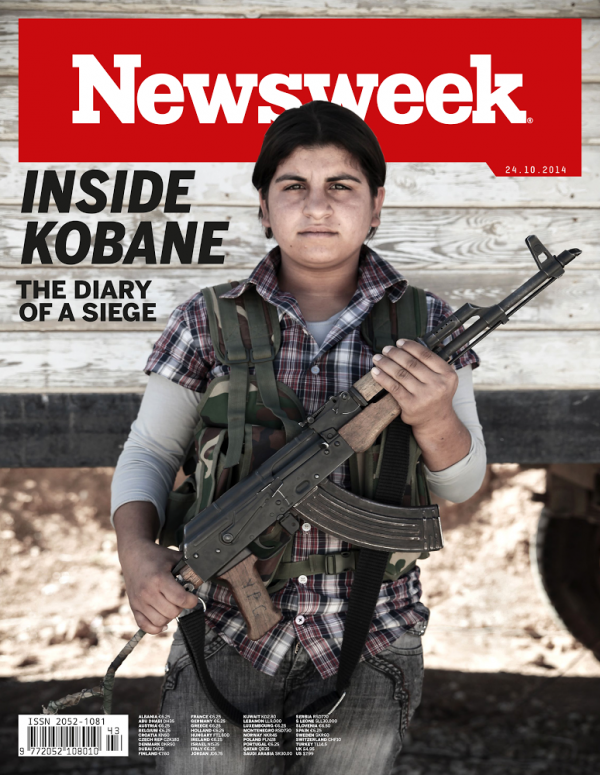
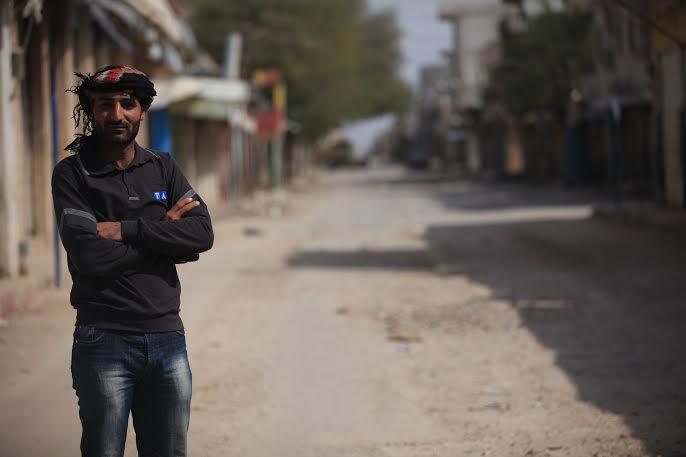










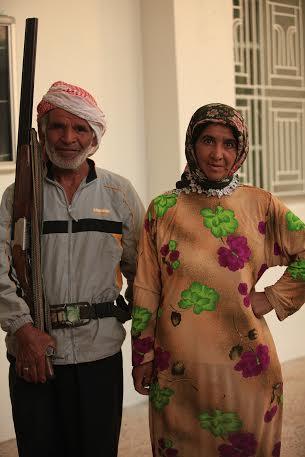
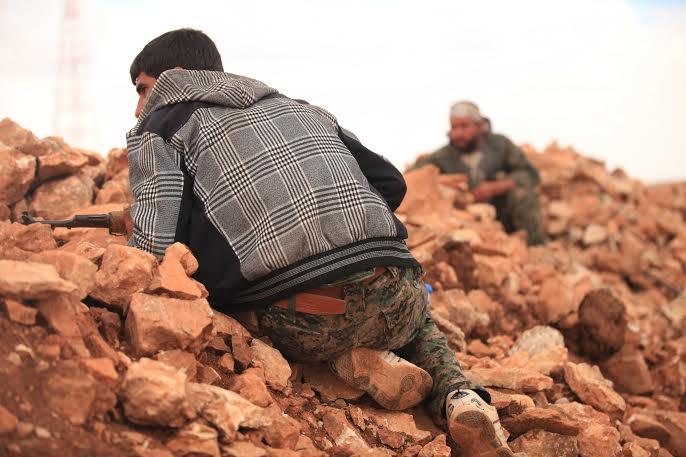
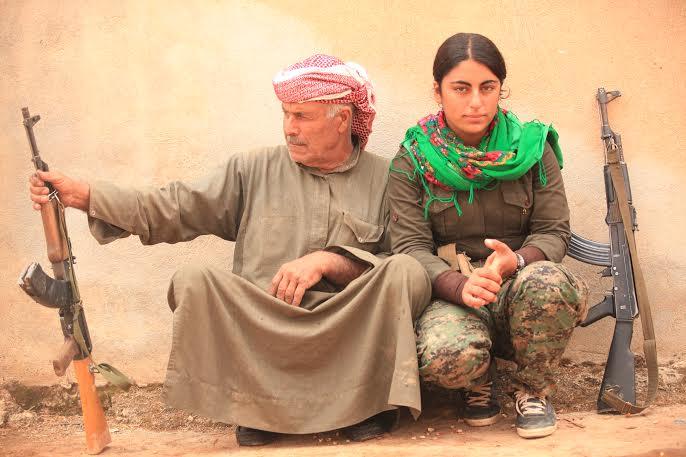
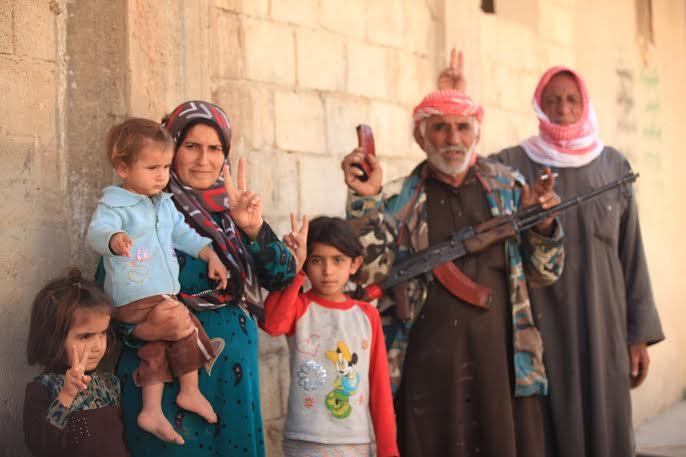
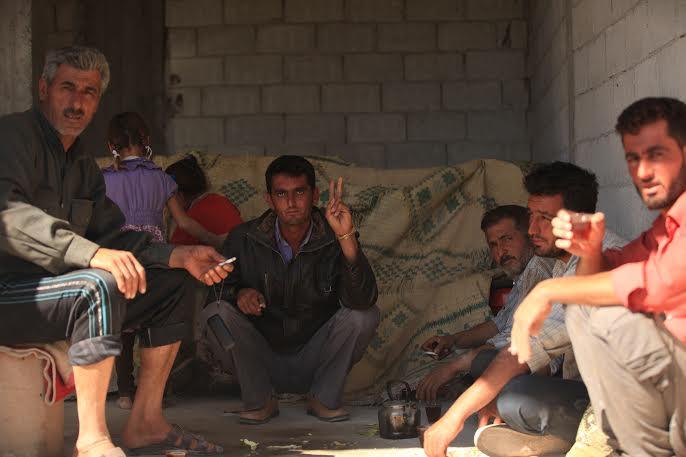
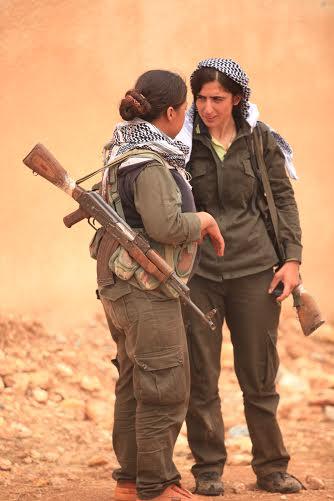
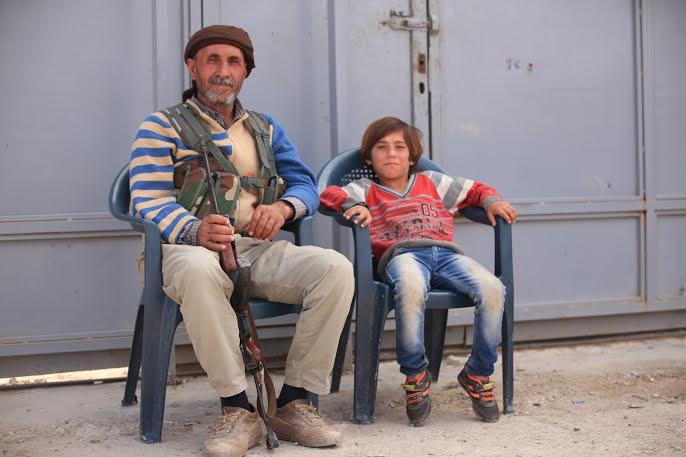
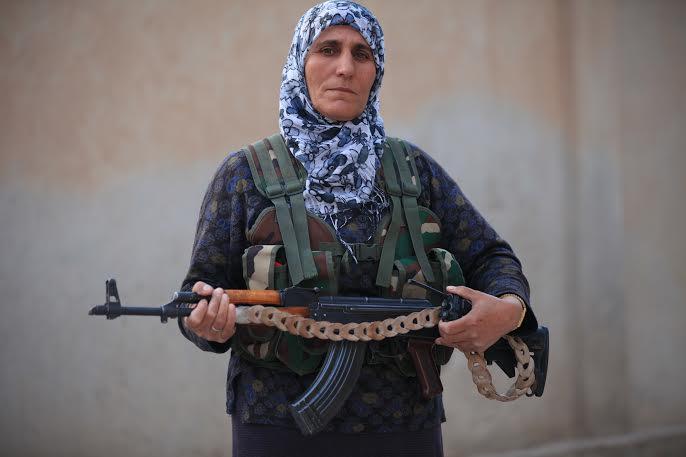
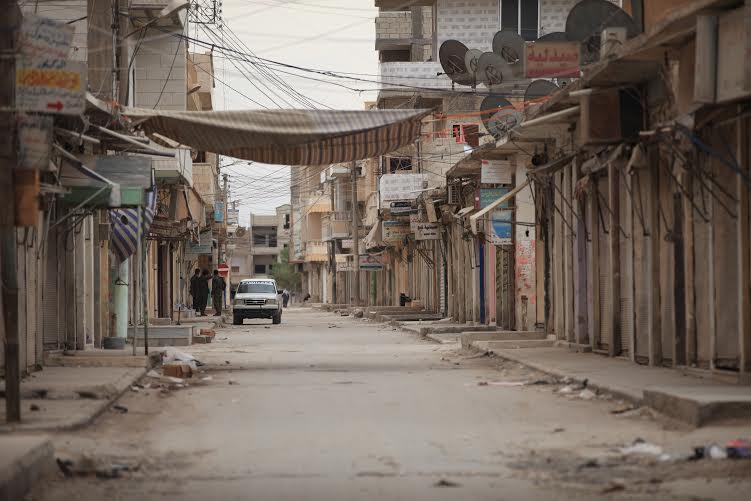
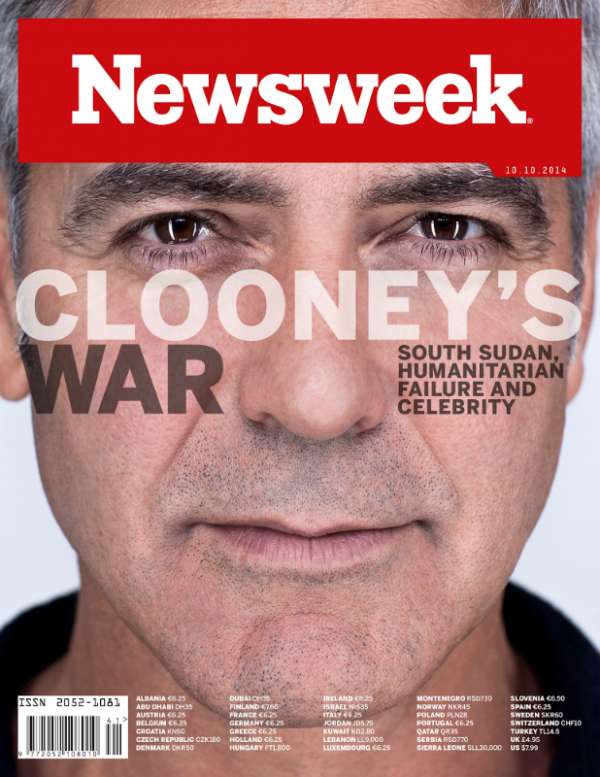
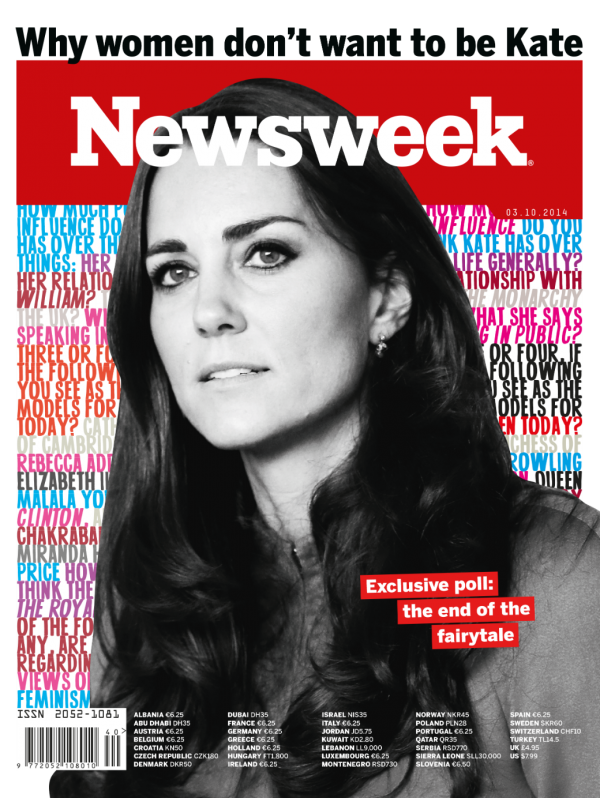

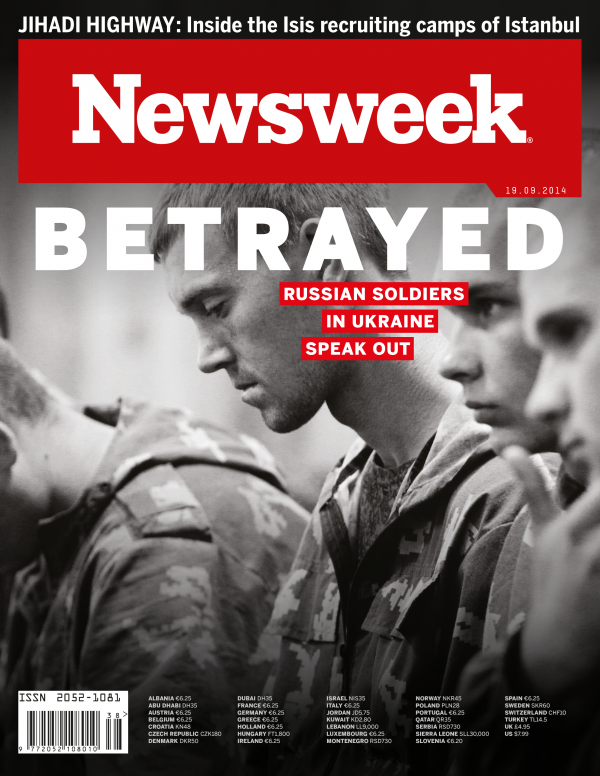
1 comentario
TRADUCCIÓN AL ESPAÑOL/TRANSLATION TO THE SPANISH -
Mi información es para el pueblo kurdo sepan que Kobane está vivo y bien, porque la realidad es que esta ciudad está a la altura de una increíble y una resistencia sin precedentes contra continuas ofensivas ISIS que utiliza todos los medios de terror con el fin de llevar a cabo un genocidio contra el pueblo de Kobane.
Además de ISIS, algunas organizaciones internacionales de medios de comunicación han informado de que Kobane ha caído casi por completo en manos de hombres armados ISIS, pero esto es una pura mentira para romper la resistencia Kobane. Si fuera cierto, entonces no me informaré de aquí.
Newsweek Magazine es nuevo en Imprimir
Me he alojado en mi ciudad con el fin de contrarrestar este tipo de noticias propaganda difundida por algunos medios. Además, me quiero morir aquí con mi gente en mi ciudad, porque abandonar Kobane hay solución. Kurdos mueren en todas partes, ya sea aquí, en otros lugares de Siria o en Turquía. Por lo tanto, prefiero quedarme y estoy feliz de hacer lo que sea necesario para contribuir a la resistencia de mi ciudad a través de mi periodismo.
Un notable resistencia contra el terror ISIS se llevó aquí por un pueblo sitiado cortos de alimentos, combustible, armamento y sin apoyo internacional suficiente. Los pistoleros ISIS derrotados cinco divisiones del ejército iraquí en Mosul y en otras partes de Irak en un día en junio, pero Kobane ha estado resistiendo solos por casi un mes, a pesar de ser sitiada durante casi un año y de corte de todo el otro kurdo ciudades y pueblos en Siria. Kobane ya ha hecho historia con esta resistencia y quiero ser parte de contar su trágica historia, pero sin embargo heroica.
Heysam Mislim
Heysam Mislim, un periodista de Kobane que decidieron quedarse para contar la historia de "resistencia increíble y sin precedentes" de la ciudad en contra de ISIS. Veysi Altay
El dormir en el ala
La mayor parte de acoplamiento
Los daneses ruedas de sus bicicletas como coches se eliminan EB_Bike innovation_Copenhagen 2_ foto crédito Ursula Bach
7.5K Acciones
¿Por qué se oponen Matrimonio Gay Mantenga Belly-Flopping en Corte 10_17_PG0216_GayMarriage_01
3k Acciones
'El Snappening' Hack pueden gotear Hasta 200.000 sensibles Snapchat Fotos snapchat
1.6k Acciones
De Notre Dame Football increíble Walk-On Joe Schmidt 10_14_Joe_Schmidt
1.1k Acciones
Más allá de Garganta Profunda 10_10_DeepThroat_11
737 Acciones
Lo más leído
'El Snappening' Hack pueden gotear Hasta 200.000 Sensible Snapchat Fotos 'El Snappening' Hack pueden gotear Hasta 200.000 Sensible Snapchat Fotos
Chop Chop Chop Chop Square Square
Más allá de Garganta Profunda allá de Garganta Profunda
¿Por qué se oponen Matrimonio Gay Mantenga Belly-Flopping en Corte ¿Por qué se oponen Matrimonio Gay Mantenga Belly-Flopping en la Corte
Los científicos Discuta Méritos de Psicodélicos En Medicina científicos discuten Méritos de Psicodélicos En Medicina
Jueves 9 de octubre. Turquía se enfrenta a una renovada presión para intervenir militarmente en Kobane en lugar de ver desde el otro lado de la frontera. Pero el gobierno dice que no está dispuesto a participar a menos que la coalición se dirige el régimen del presidente sirio Assad y establece una zona de exclusión aérea.
Hoy marcó el día 25 de la resistencia de Kobane contra ataques en curso de ISIS. Lo que está sucediendo aquí es extraordinario en la forma que desee verlo. Todo el mundo está jugando un papel en esta resistencia histórica contra ISIS y en defensa de su ciudad, a pesar de los intensos combates hace estragos en las afueras y dentro de los distritos interiores de la ciudad, también.
La vida en estado de sitio se ha unido a la gente. Todo el mundo es un voluntario en Kobane, con el fin de mantener la resistencia contra ISIS. Los médicos y enfermeras trabajan de forma gratuita en los hospitales de campaña; tenderos han vaciado sus tiendas de alimentos, bebidas y otros accesorios con el fin de distribuirlos gratuitamente a los combatientes y civiles.
Madres valientes cuyos hijos e hijas están luchando en la primera línea se reúnen y cocinar los alimentos sobre una base diaria para quien tiene hambre y necesita comida. El dinero ya no vale nada porque todo el mundo quiere compartir sus recursos, así como su fuerza de voluntad para ayudarnos unos a otros a través de estos tiempos difíciles y continuar con la resistencia para salvar la ciudad. Parece como si todo el mundo pertenece a una gran familia.
Esta es la solidaridad en el suelo que está alimentando el espíritu de la resistencia Kobane. El joven y viejo que son capaces de luchar contra todos han recurrido a las armas y que el voto de defender la ciudad hasta el final. Hoy, vi Partido de la Unión Democrática (PYD) mujeres co-líder Asiya Abdullah y Kobane ministro del gobierno cantón Enwer musulmán sosteniendo fusiles Kalashnikov y que dejé en la dirección de los distritos del este, donde los combates con hombres armados ISIS ha intensificado en una escala sin precedentes.
Los enfrentamientos se han convertido en una guerra de guerrillas urbana a gran escala en los distritos del este, donde hombres armados ISIS han infiltrado recientemente varios edificios clave. La lucha de la calle-a la calle se ha estado librando sin parar en los distritos orientales, sobre todo en el polígono industrial de Sina'a. Intensos combates también continúa en las afueras cerca de las colinas escarpadas de Mushta Nur, así como en el barrio de Misher.
Feroces batallas de la calle-a la calle están teniendo lugar en todo el distrito Taxa Araban, donde una ataque aéreo extranjero golpeó combatientes ISIS hoy y explotó un edificio. En las afueras del oeste, la lucha continúa, pero los pistoleros ISIS no son capaces de hacer cualquier avance. Un ataque aéreo alcanzó una posición de ISIS en el pueblo de Gulmit, al oeste de Kobane donde YPG (Unidades de la gente de protección - un brazo armado del Partido Unión Democrática) y sus contrapartes femeninas YPJ (Unidades de Protección de la Mujer) han logrado detener ISIS avanza por varios días ahora.
Bombardeos indiscriminados y bombardeos de la ciudad por hombres armados ISIS no han parado tampoco. Una bomba o una granada de mortero cae en los distritos interiores de Kobane cada diez minutos. El penacho oscuro y blanco de las explosiones que salen de los edificios destruidos cubre totalmente el cielo.
AP
Esta no es una guerra normal porque hombres armados ISIS son el objetivo de aniquilar a estar dentro Kobane todo ser viviente. Usted podría preguntarse cómo dormimos. Bueno, nada está en su estado normal por más tiempo, los patrones incluso durmiendo. La gente podía dormir en cualquier lugar y en cualquier momento, pero es imposible conseguir una hora de sueño adecuado. El sonido de los disparos, disparos de mortero y explosiones combinadas con las escenas de la destrucción de esta guerra ha llevado a todos los rincones de nuestra ciudad es desesperante. La gente está todo fuera de sus casas armados y todos en alerta para luchar contra ISIS. Turnos de guardia ya no existen, incluso para las fuerzas armadas porque todo el mundo camina, come y duerme con sus rifles, granadas y pistola con ellos en todo momento.
Si quieres dormir puedes dormir en cualquier parte, porque usted sabe que todo el mundo está en alerta a tu alrededor. Pero la mayoría de las veces simplemente fingen dormir cuando descansamos un rato. Cuando quiero ir dentro de una casa a dormir, el pensamiento de repente entra la cabeza de la gente en Kobane siendo exterminados en un genocidio o de que un mortero o una bomba podrían aterrizar en la cabeza en cualquier momento. Esto me impide dormir bien y creo que este es el mismo para casi todas las personas que viven aquí ahora.
No hay electricidad adecuada, agua, medicinas - y armas adecuadas, incluso para el caso. Nos faltan casi todo, por lo que racionamos todo. Un luchador YPG que volvió de la línea del frente oriental hoy me dijo que hombres armados ISIS tienen municiones ilimitadas, por tanto, que a veces disparan sólo por diversión, pero los combatientes del YPG y YPJ que apuntar correctamente para no perder ni una sola bala.
Más de IBT MEDIA
El mercado alcista Isnâ ???? t Over, pero es ...
bizu.tv
El mercado alcista Isnâ ???? t terminado, pero está cambiando
CDC desarrolla nueva Enterovirus 68 Prueba ...
Diario Médico
CDC desarrolla nueva Enterovirus 68 Prueba de la esperanza para prevenir futuras muertes infantiles
Disney Infinito 2.0 Noticias: Star Wars Rumores ...
iDigital tiempos
Disney Infinito 2.0 Noticias: Star Wars rumores y Nova Sneak Peek Emerge por delante de PAX Prime
En otras palabras, los combatientes kurdos tienen que racionar incluso sus balas y municiones. La gente ha cavado pozos para obtener agua potable debido ISIS hace mucho tiempo explotó todas las tuberías que suministran agua a la ciudad limpia. Generadores nos proporcionan electricidad limitado y la gente va a donde se encuentran los generadores y luego hacen cola para cargar sus teléfonos. También ración de alimentos, té y café.
Algunas de las armas la gente está utilizando son lamentablemente inadecuados. Vi dos ancianos de hoy: uno tenía una escopeta y el otro tenía un rifle de caza. Es normal que la cinta mancha alrededor del Kalashnikov colillas que los combatientes están llevando.
escopeta
Un hombre sostiene una escopeta. Los kurdos que luchan en Kobane están fuertemente superados en armas por parte de militantes de SI. Veysi Altay
Kobane es corto de los medicamentos. Todos los medicamentos que llegan aquí se introducen de contrabando en por los kurdos en el norte de Suruc Kurdistán (Turquía). Estos kurdos llevan medicinas en las mochilas y los de contrabando a través de la frontera para ayudar a la resistencia. A veces la comida y el combustible también se introducen de contrabando desde Suruc. Yo estaba en el edificio de la Asamblea de hoy del Pueblo y conocí a cinco mochileros kurdos que sólo habían logrado contrabandear medicamentos de manera segura en Kobane. Dijeron que los guardias fronterizos turcos habían abierto fuego contra ellos y que apenas logró escapar con vida para llevar a los medicamentos aquí.
Muchas personas que traen los medicamentos y otros suministros desde el Kurdistán turco están arriesgando sus vidas ya que el gobierno turco cerró los pasos fronterizos y los guardias fronterizos turcos no dudan en disparar a civiles kurdos. Guardias fronterizos turcos también arrestaron a 158 civiles kurdos de Kobane hoy después de que trataron de cruzar la frontera hacia el norte de Kurdistán (Turquía). Ahora se llevan a cabo como prisioneros en el pueblo fronterizo de Ali Kur. Hablé con una chica entre los arrestados porque todavía en secreto tiene su teléfono y me dijo que los soldados turcos han amenazado con expulsarlos de nuevo a las zonas controladas por ISIS de Kobane. Los soldados les han dicho que deberían haber evacuado Kobane hace mucho tiempo y que ahora están considerados contrabandistas ilegales debido a que el gobierno turco ya no acepta refugiados de Kobane. Así que este fue mi ciudad sitiada hoy. Está vivo todavía, bastante desafiante frente de todo este tipo de presiones, embargos y ataques terroristas que vienen de todos los lados. Ya veremos qué pasa mañana.
Street Battles Intensificar
Viernes 10 de octubre. Como los ataques aéreos liderados por Estados Unidos continúan, un funcionario kurdo afirma que ISIS ha sido empujado hacia el borde de la ciudad. En un comunicado, el ejército de Estados Unidos confirma que los kurdos están "sosteniendo en contra de ISIS".
Las feroces batallas de la calle-a la calle, así como los bombardeos en curso se han intensificado a través de los distritos interiores de Kobane hoy. Las explosiones se ven y se pueden oír en todas partes como ISIS se enfoca en áreas residenciales. Se está intensificando su ataque a una escala sin precedentes. Las bombas ISIS y proyectiles de mortero indiscriminadamente caen uno tras otro en los edificios del centro de Kobane. Intensos bombardeos de hoy señalan que ISIS pronto se expandirá más ofensivas terrestres dentro de la ciudad. A juzgar por los intensos bombardeos de hoy en día, parece como si los hombres armados ISIS han sido reabastecido con muchas más armas de artillería y pesados para promover sus embestidas.
Es también probable que más refuerzos han llegado de las cercanas ciudades ISIS bastión de Jarablus y Tall-Abyad para promover sus ataques a Kobane. Fuertes enfrentamientos ha tenido lugar cerca de los jardines al oeste de la ciudad.
combatientes del YPG
Combatientes del YPG en las afueras de Kobane Veysi Altay
Ataques aéreos extranjeros han llegado a posiciones de ISIS en Mubtal y cerca de las colinas Mushta Nur. Sin embargo, las batallas más intensas de la calle-a la calle están sucediendo en los distritos del sur y este de la ciudad. Hoy fui al distrito Botan, al sur de Kobane y nunca he sido testigo de tal combate aterrador-calle-a la calle en todos los años de esta guerra civil siria. Los enfrentamientos fueron del todo inquietante y muy desordenado. Fue un caos total. Fuertes combates se llevó a cabo en todo el distrito, mientras que las bombas de forma consecutiva aterrizaron en casi todos los edificios de la zona. Los combatientes del YPG me dijeron que salir y volver a Kobane central porque se estaba poniendo muy peligroso. Era indescriptiblemente polvoriento en este distrito. Además, los restos de los edificios que los tanques ISIS habían destruido cubrió toda la zona, así como los uniformes y los rostros de la mayoría de los combatientes kurdos.
Conté los cuerpos de nueve hombres armados ISIS muertas en el suelo, y un combatiente YPG me dijo que los habían matado en una emboscada a principios de la mañana, cuando los hombres armados habían avanzado, sin darse cuenta de que los combatientes del YPG estaban estacionados dentro de los edificios demolidos.
También vi dos combatientes muertos en YPG, así como cinco que fueron gravemente heridos. Una vieja ambulancia con ventanas rotas y varios orificios de bala en sus puertas vino a tomar los combatientes del YPG heridos de distancia.
Una mujer kurda de civil condujo a la ambulancia y, junto con una enfermera, se trasladaron a los combatientes heridos a los hospitales improvisados. El distrito estaba tan cubierto de polvo y escombros que me preguntaba cómo estos heroicos combatientes kurdos son capaces de seguir adelante en medio de este ambiente caótico.
No puedo creer lo que mis ojos están viendo. La lucha es sin parar y los bombardeos que siga intensificando. Me fui para volver al bazar central, pero luego me he quedado atrapado por un tiempo debido a los enfrentamientos de la calle-a la calle por el hospital Mustashfa Watani.
La lucha fue peor en esta área. No se parecía a nada de lo que he visto en mi vida. Me puse de pie en torno a 200 metros del hospital y proyectiles de mortero llovían como si estuvieran cayendo del cielo. Gracias a Dios, este hospital está vacío, de lo contrario, los proyectiles de mortero que pudo convertirse en el asesinato en masa de civiles. En los distritos del sur y del este en el interior Kobane, no es una cuestión de escuchar de fuego cruzado o un bombardeo cada 5 a 10 minutos, que es incesante e interminable.
Los pistoleros ISIS tienen todo tipo de armas pesadas, por lo que ellos traen tanta destrucción. Pero la milicia resistencia kurda luchar con Kalashnikovs viejas, explosivos caseros y juegos de rol. Esta es una guerra desigual y todo el mundo lo sabe. No obstante, la moral de los combatientes de la resistencia Kobane y la gente que están defendiendo es increíble. El YPG y YPJ saben por qué están luchando - y que están luchando en contra.
Padre e hija
Fotos: En el interior del cerco de Kobane
Una colección de fotos desde el interior Kobane, la ciudad en la frontera sirio-turca bajo el asedio de ISIS por el fotógrafo curda Veysi Altay
VER GALERÍA
Yo creo que estos hombres y mujeres kurdas están luchando y sacrificándose por el mundo entero, porque se trata de una resistencia a la defensa de los valores humanos y la dignidad humana que ISIS quiere desterrar de la faz de la tierra.
Vi una mujer combatiente kurdo cuya pierna derecha fue parcheado a causa de su lesión, pero ella entró cojeando en la esquina del edificio, cerca del hospital Mustashfa Watani para disparar en el lado opuesto, donde se colocaron pistoleros ISIS. Las palabras no hacen justicia a la heroica resistencia y valentía soportar por estas mujeres luchadoras.
Luego vi un par de combatientes del YPG que tenían sus hombros remendado debido a las lesiones anteriores, pero todavía estaban luchando con determinación. Fighters gritan consignas entre sí para levantar la moral en el frente. Por ejemplo, "Tierra o Muerte", es uno de esos lemas que no dejaba de oír en medio del caos en el distrito Botan hoy. La palabra kurda, "Heval" (camarada), es lo que siempre se oye de los combatientes cuando dirigen y advierten unos a otros en medio de los caóticos enfrentamientos.
Me las arreglé para volver con seguridad al centro de Kobane pero quedé muy sorprendida por lo que acababa de presenciar. Luego, caminé alrededor y me encontré con 21 años de edad Dilovan Salih, un combatiente kurdo que anteriormente trabajó en las fuerzas de seguridad Asayish locales.
Sali estaba sentado frente a la sede del partido Unión Democrática (PYD) sosteniendo su pistola en una mano y fumando un cigarrillo en la otra. Él parecía muy triste y yo nunca lo había visto tan triste. Él me dijo que él ha sido informado de que hombres armados habían decapitado a su 74 años de edad, abuelo, que era un agricultor y se había negado a dejar su hogar en el pueblo de Pinar, en las afueras de Kobane. Dijo que sus primos y tíos se encuentran ahora en Turquía y le llamó por teléfono para confirmar la tragedia porque ISIS publicó fotos de su abuelo decapitado en Internet.
Lo abracé, pero me hubiera gustado que nunca lo había hecho la pregunta en primer lugar, porque hablar de él le hacía aún más triste de lo que era antes. Pero cuando se enteró de tales atrocidades cometidas en los pueblos fuera Kobane te das cuenta de que podría ocurrir en cualquier momento a los miles de civiles que han permanecido dentro de la ciudad. Es aterrador, especialmente cuando los ataques se intensifican y los bombardeos se están cerrando poco a poco por todos lados.
Funcionarios kurdos y comandantes han estado exhortando a todos los civiles a abandonar Kobane para el norte de Kurdistán, el sureste de Turquía. Alrededor de 400 civiles abandonaron hoy, pero muchos otros han optado por quedarse, diciendo que preferían morir aquí que ir a otro lugar como refugiado. Un anciano me dijo que prefería morir dentro de su casa que son arrestados o asesinados por soldados turcos en la frontera, o viven en las calles de Turquía como refugiados abandonados. Ahora hay un riesgo de masacre en masa como los ataques se acercan - pero la resistencia continúa.
familia Kobane
Una familia aún dentro Kobane. Veysi Altay
Tormenta del polvo
Sábado 11 de octubre. Al menos 553 personas se informa, han muerto en un mes de combates en Kobane, según el Observatorio Sirio para los Derechos Humanos. Los kurdos repeler un ataque antes del amanecer y se encuentran todavía en el control de paso de frontera de la ciudad en Turquía.
Hoy Kobane despertó una vez más a los sonidos de los bombardeos y el fuego del arma. Sin embargo, los combates y bombardeos han relajado un poco en el distrito central en comparación con ayer. La guerra se escucha sobre todo en los distritos del este y noreste. Los combates han disminuido en el sentido de que se detiene de vez en cuando antes de volver recurrentes. Tal vez esto se debe a que ISIS ha sufrido fuertes golpes y es tal vez también porque hay una tormenta de polvo. Esta mañana los edificios parecen sombras oscuras a causa de la tormenta. Creo que no hay suficiente visibilidad para la lucha y esto ha impedido nuevos avances ISIS.
Los pistoleros parecen haberse retirado de varias posiciones que mantuvieron ayer en los distritos del este; por lo que el intenso bombardeo se centra principalmente en esta parte de la ciudad. Vi un camión YPJ llena de mujeres combatientes que van a los distritos orientales de esta mañana. Me pidieron que fuera con ellos, pero un capitán se negó diciendo que la lucha en los distritos del este es intenso y que debería mantenerse alejado. Yo sobre todo quedo en una casa situada en el centro de Kobane al lado de un hospital improvisado. Ya no tenemos el desayuno; sólo tenemos una comida al día, ya sea por la tarde o por la noche. Sin embargo, sí tenemos café o té por la mañana en una casa frente a nosotros.
Fui allí esta mañana. Algunas de las mujeres y hombres que han alojaron hacer el café y el té para todos. Usted sólo tiene que ir en y obtener una bebida caliente. Alrededor de ocho personas están siempre presentes allí y ver diferentes personas todos los días, incluyendo combatientes, médicos y enfermeras. Los civiles pasan el día hablando de sus familias que han quedado en calidad de refugiados, el destino de la ciudad y lo que podría pasar como la ofensiva Isis continúa. Hay una radio y todo el mundo se reúne alrededor de él cuando el noticiero del árabe regional y radios internacionales informar sobre Kobane. Algunas personas gritan "¡Oh vosotros los mentirosos" cuando la noticia dice Kobane ha caído completamente en ISIS manos porque esto claramente no es cierto. Cuando la noticia es sobre los avances de la resistencia Kobane entonces algunas personas gritan, "¡Viva nuestros niños y niñas determinados." Otros gritan, "Hacia la Victoria; Kobane es Stalingrado y vamos a convertir esta ciudad en un cementerio para las ratas ISIS ".
Fighters
Fighters se toman un descanso. Veysi Altay
Las personas bromean sobre lo que sucederá cuando los combates facilita - cuando las mujeres van a pedir a los hombres a lavar las ollas. "Común, se levanta, chicos, que ya no tienen derecho a sus viejas formas de vida cuando nuestras mujeres llevan la lucha en defensa de nuestra ciudad."
La casa donde conseguimos nuestro té y café fue el hogar de una familia de seis, pero sólo el padre ha quedado atrás y él es un luchador ahora. Esta casa, incluso se convierte en un improvisado hospital a veces porque cuando la gente carrera para traer un luchador lesionado se olvidan de que el hospital se encuentra enfrente, así que simplemente correr y llevar al herido aquí. Alguien lo general se extiende a traer una enfermera del hospital improvisado real.
Cuando fui allí esta mañana, vi a Abu Nasih. Un hombre mayor, era un agricultor y ahora tiene un arma en sus manos, pero no ir a la primera línea. Pasa sus días entre esta casa y el hospital improvisado opuesto, ayudando en lo que sea necesario.
Abu Nasih es conocido por sus chistes, pero hoy, cuando le dije buenos días a todo el mundo que respondió sin entusiasmo excepto que Abu Nasih no hizo algún chiste o me llaman nombres, como nos tiene acostumbrados. Sabía que algo estaba mal, pero yo no le pregunté de inmediato preguntas.
Tengo mi café y Abu Nasih me lió un cigarrillo. Tranquilamente pregunté qué le pasaba y Abu Nasih me dijo que hombres armados ISIS han decapitado a un granjero kurdo de 55 años de edad llamado Ammar Ghirar delante de su esposa e hijos en el pueblo de Tall Khazal, alrededor de 16 kilometros al sur de Kobane. Un hombre árabe local en secreto llamó para confirmar la triste noticia.
Abu Nasih dijo que nadie sabe el destino de la esposa del hombre, porque ella fue hecho prisionero. También saludó el coraje y la valentía de este agricultor que ha optado por quedarse en su pueblo, pero luego dijo que debería haber evacuado con todos los demás.
Vemos muertos y heridos a diario aquí en Kobane, pero cuando un civil es asesinado de una manera tan inhumana que nos hace muy triste. En los últimos dos años el pueblo de Kobane han abierto sus puertas a todos los refugiados sirios, incluidos sunitas, cristianos y Alewites. Kurdos han ayudado a decenas de miles de refugiados no kurdos. Ahora, una masacre es inminente en contra de nosotros, pero a nadie parece importarle. Nos sentimos solos en esta lucha.
Los enfrentamientos en los distritos orientales era pesado esta mañana. Finalmente me las arreglé para llegar alrededor del mediodía porque un coche logística YPG vino aquí y el conductor accedió a llevarme.
Cuando llegamos no había fuego cruzado y francotirador de extinción de incendios, pero los combatientes del YPG y YPJ parecía en éxtasis feliz porque habían volado un tanque que estuvo cerca de sus posiciones.
combatientes YPJ
Combatientes YPJ Veysi Altay
El capitán de campo me dijo que habían matado a unos 30 hombres armados ISIS en una emboscada al principio del día cuando los hombres armados habían tratado de llegar más lejos en el corazón de esta zona y los combatientes kurdos había esperado hasta que se reagruparon en la calle principal. De repente abrieron fuego desde todos los lados y mataron a todos los hombres armados ISIS. Conté 19 de ellos.
Taqa Tenel es donde se encuentra Kobane calle. Lo que solía ser una zona muy concurrida. Las tiendas venden principalmente ropa de mujer y este mercado se dispararon en las tardes. Los recién casados, los que participan, madres e hijas todos llenaron las calles y tiendas. Ahora los edificios están destruidos y la ropa de las mujeres, barras de labios y esas cosas se encuentran abandonados en medio de los escombros.
De repente, un disparo de francotirador, seguido de una lluvia de ametralladora, interrumpió mis pensamientos. Me retiré. Entonces un capitán YPG dijo al conductor de la logística para que me llevara de vuelta al distrito central tan pronto como sea posible. Por suerte, el conductor dijo que tenía que dejar primero de descuento en alimentos y municiones a los combatientes kurdos cercanos a la mezquita de Haji Rashid - y así que nos colamos y fuimos a ese frente también.
Cuando llegamos a cerca de la mezquita, entramos en un edificio medio destruido en 17 YPG y combatientes YPJ se alojaban. Otros fueron colocados en los edificios de los alrededores. La lucha había desaparecido un poco y era ahora un tiroteo de francotiradores. La mitad de los combatientes kurdos fueron completamente cubierto de polvo. Ellos dijeron que la lucha había sido intenso esta mañana y algunos de ellos habían entrado en las líneas enemigas y volado dos camionetas. Tres YPG combatientes fueron martirizados en esta operación detrás IS líneas. El conductor logística dio estos luchadores enlatados de alimentos, agua, tres cajas de balas Kalashnikov, dos cajas de balas de francotiradores y una caja de granadas.
Luego, nos fuimos para volver al distrito central. Cuando llegué a Kobane céntrica a unos 40 combatientes se preparaban para ir al cruce de la frontera norte. El cruce se encuentra a las afueras del distrito nororiental y si es capturado todo el pueblo y los combatientes se rodeó dentro Kobane. Sin embargo, la buena noticia es que los combatientes del YPG y YPJ estacionados cerca del cruce fronterizo han logrado hacer retroceder a las ofensivas ISIS consecutivos. Pistoleros ISIS luego enviaron tres atacantes suicidas que conducían vehículos repletos de bombas para detonar a sí mismos al llegar a los combatientes kurdos. Sin embargo, los tres vehículos fueron alcanzados desde lejos y destruyeron por completo antes de llegar a los combatientes. Esto rompió la moral de ISIS y que se retiró de la travesía. La frontera fue salvado hoy y así que eran las personas en el interior Kobane.
Un luchador YPG tenía un instrumento Saz con él. Cantó una canción mientras los otros combatientes tomaron de la mano para bailar junto. Tenían muy alta moral. Justo antes de salir, el luchador YPG me abrazó y me dijo que lo recuerda con esta canción si no vuelve de el puesto de control del norte.
Me reuní con Abu Nasih nuevo. Tuvimos un cigarrillo juntos. Parecía feliz de escuchar la noticia de que hombres armados ISIS no han sido capaces de avanzar hoy, pero él todavía no hacer ningún chiste como nos tiene acostumbrados.
Así que muchos niños
Domingo 12 de octubre de 2014. funcionarios de Defensa de Estados Unidos anunció que Turquía se ha comprometido a dejar que las fuerzas estadounidenses y de la coalición utilizan sus bases de operaciones contra ISIS. Mientras tanto, el vicecanciller de Kobane dijo que confía en que los gobiernos occidentales tomarían medidas de última hora para salvar la ciudad.
Kobane Central es casi la calma hoy. Esta mañana hemos escuchado tiroteos, disparos de francotiradores y explosiones ocasionales, pero no son tan constantes como antes. La lucha se ha convertido en un campo de batalla de francotirador, aunque las explosiones todavía tienen lugar a nuestro alrededor. En los distritos orientales y occidentales, tiradores de ambos lados se dirigen unos a otros de un edificio a otro.
En el centro de Kobane, cientos de civiles han comenzado a salir de sus hogares y refugios antiaéreos cuando se acerca la tarde y bombardeos en ocasiones se oyó a lo lejos. Nunca me imaginé que tantos civiles han quedado dentro el centro Kobane. Un hombre me dijo que sus parientes del norte de la ciudad se han negado a cruzar la frontera hacia Turquía y que él conoce a cientos de familias que aún se esconden dentro de sus casas y refugios antiaéreos. Esto confirma que miles de civiles siguen atrapados en la ciudad. Es difícil saber exactamente quién está aquí. Estos civiles podrían ser sacrificados en cualquier momento. Dios no permita que ISIS avanza y estos civiles son aún dentro de la ciudad. También vi a muchos niños de hoy y no podía creer lo que veía. Es como si vinieran de la nada.
Padre e hijo
Un padre y su hijo menor fuera de su casa en el centro de Kobane. Veysi Altay
Funcionarios kurdos les habían protegido en refugios contra bombas por toda la ciudad, lejos de los campos de batalla. Ver y oír los niños que juegan fue maravilloso. Siguen siendo un gran riesgo y los funcionarios están tratando de convencer a sus familias a salir de la ciudad lo más pronto posible. En cierto modo, yo no quiero que nos dejen. Su presencia asegura que la ciudad sigue viva a pesar de todos los ataques mortales. Pero los funcionarios tienen razón, porque esta guerra es feroz, feo y el destino de la ciudad sigue siendo desconocido. Generalmente, las personas se reunieron hoy para hablar unos con otros y tomar un café o echar una mano con lo que fuera necesario.
Alrededor de 40 mujeres se reunieron para cocinar las patatas y el arroz para todo el mundo. La comida fue dado por primera vez a los niños, luego a los heridos y luego las mujeres. Algunos de los hombres de edad avanzada bromeó diciendo: "En este autogobierno kurdo democracia que hemos establecido y defienden, los hombres están siendo socavados porque somos siempre los últimos en llegar nuestra parte."
Comida enlatada se introduce de contrabando en Kobane desde el norte de Kurdistán (parte de Turquía) y que se distribuyó entre la gente también. Funcionarios Kobane también llegaron alrededor del distrito central de hoy y estaban armados.
Estos políticos kurdos han estado tomando parte en los combates contra ISIS para defender Kobane, pero hoy parecía que proteger a la población civil y vigilados a los niños hasta que pudieran llevarlos a las zonas seguras cerca del cruce fronterizo.
Vi canciller Kobane cantón Ferhat Hac Issa llevar una pistola en el hombro, mientras que comer con la gente. También vi ministro sociales Kobane cantón Mahmoud Bashar con un rifle en sus manos. El viceprimer ministro cantón Kobane Khalid Barkal también estaba armado y que fue una de las personas. La gente en general se sentían revividos con la oportunidad de conseguir un poco de aire fuera de los refugios y los campos de batalla de primera línea y sin bombas de aterrizaje cercana.
luchador YPJ
Un combatiente en las Unidades de kurdos sirios Protección Mujeres (YPJ). Veysi Altay
Un capitán YPJ celebró un megáfono para hablar con la gente acerca de la evolución de la ciudad. Ella dijo que se han comprometido a luchar hasta el final. Ella dijo que si había algo más precioso que su vida ella también daría que para defender al pueblo. Ella levantó la moral de todo el mundo. Ella dijo que los kurdos tienen la cultura, la música y la poesía, por lo tanto es imposible para destruirnos. Ella confirmó los informes de que alrededor de 100 hombres armados ISIS han sido capturados con vida por los combatientes del YPG y YPJ. Ella dijo que es malo matar a los prisioneros de guerra y que no van a matar a ellos, porque los kurdos son diferentes de hombres armados ISIS.
Cientos de combatientes del YPG y YPJ más tarde se reunieron en este distrito central de hoy después de que trajeron algunos combatientes heridos a los hospitales improvisados. Pero dijeron que no hay movimiento es visible en la ciudad en otros lugares debido a los combates se ha convertido principalmente en tiroteos en ambos lados con bombardeos ocasionales de ISIS artillería.
Oí una mujer luchadora YPJ cantando sobre su madre mientras ella estaba descansando en el suelo en el patio delantero del hospital improvisado. Ella me pidió que le diera un poco de agua, pero la enfermera dijo que no podía darle nada hasta que un médico la vea.
Le ofrecí un cigarrillo y la enfermera dijo 'No' de nuevo. Muchos de nuestros combatientes heridos se introducen de contrabando en el norte del Kurdistán (en Turquía) para el tratamiento si han sufrido lesiones graves. Otros con heridas leves a menudo regresan a los campos de batalla, incluso si no se han recuperado totalmente.
No Cruz Roja o de la Luna existe aquí. Los médicos y enfermeras son todos los lugareños y están trabajando día y noche para ayudar a los heridos con la medicina y los recursos muy limitados.
Es triste que mientras que todos los gobiernos del mundo han abandonado esta resistencia Kobane contra ISIS, las "organizaciones de ayuda humanitaria" también nos han abandonado.
Francotiradores mataron a dos hombres armados YPG ISIS que intentaron infiltrarse en este distrito central. Llegaron al cine como un medio de propaganda para romper la moral de los kurdos. Pero francotiradores YPG a los dos muertos. Uno murió mientras filmaba a sí mismo con una bandera de ISIS. Los combatientes del YPG y YPJ se han comprometido a defender esta ciudad y el hecho de que ellos atacan las líneas enemigas es simplemente increíble. Se está impulsando la moral.
También hemos escuchado explosiones en el oeste de Kobane hoy y mucha gente dice que estos son los Estados Unidos y de la coalición extranjera ataques aéreos, que han dirigido con éxito vehículos ISIS, pero no sabemos a ciencia cierta.
Fui a la parte delantera Taqa Botan pero tuvimos que mover con cuidado porque los francotiradores de ambos lados se colocaron en todas partes, disparando el uno al otro. El sonido de los disparos de francotiradores no es como cualquier otro sonido. Se me choca porque sabes que cada disparo se quiso matar.
Fui brevemente de nuevo a Taqa Tanel así hoy y conocí a un grupo de combatientes kurdos en uno de los edificios demolidos. Los rostros cansados de los hombres y mujeres combatientes y sus uniformes cubiertos de polvo mostraron que habían estado involucrados en graves enfrentamientos.
Calle
Una calle abandonada en Kobane. Veysi Altay
También me olía cadáveres: que era extraño y repugnante. Un capitán YPJ me dijo que hombres armados ISIS no se preocupan por sus muertos, por lo que sólo los dejan en el campo de batalla. Para los combatientes kurdos que es muy importante no dejar los cuerpos de sus compañeros caídos.
A veces una ofensiva tiene lugar justo para quitarle los órganos, por lo que finalmente puede descansar en paz después de un entierro decente y el entierro. No obstante, la lucha era tan violenta que algunos combatientes de las mujeres eran incapaces de recuperar los cuerpos de sus combatientes YPJ caídos.
ISIS pistoleros tomaron los cuerpos de las mujeres combatientes kurdos, mutilaron sus cuerpos y los decapitaron a pesar de que ya estaban muertos. Mis amigos de Turquía me dijeron que ISIS ha publicado las fotos de los cuerpos mutilados y la decapitación en línea en un intento de romper el espíritu del pueblo kurdo y extender el miedo entre los combatientes de la resistencia Kobane.
No va a funcionar, pero el olor de los cadáveres siempre permanecerá conmigo.
Volví al distrito central de la puesta del sol y una especie mujeres me di un poco de atún en conserva, pero yo no podía comer porque el olor de los cuerpos muertos ISIS. Me hizo sentir enfermo. Nadie está seguro de lo que pasará mañana. O es que ISIS desplegará más artillería pesada y más tanques para destruir la ciudad o combatientes del YPG y YPJ hará más progreso y más empuje ISIS espalda. Es una guerra de imprevisibles y el destino de mañana es tan enigmática como la guerra misma.
Solicitud de reimpresión
Enviar corrección
Únete al debate
Regístrate para obtener la entrega a domicilio de Newsweek
101014 cubierta
cubierta de Kate
Jack Cubierta Unión
Newsweek Europa 19-09-14
Quiénes somos Publicidad Contacto IBT multimedia Empleo de Autor Política de Privacidad Términos de Uso Términos de Venta Correcciones Archivo
© 2014 Newsweek LLC
Dentro Kobane: El Diario de un Siege
Compartir
comentario
Ir al Inicio